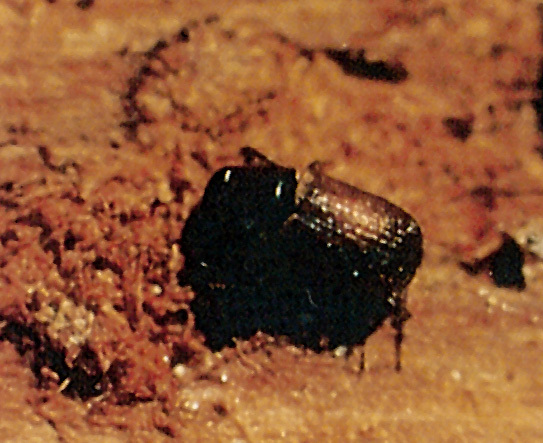Heli-logging to minimize the spread of Douglas-fir beetles on Crown land in the Williams Lake area will once again be undertaken by the Ministry of Forests, Lands, Natural Operations and Rural Development.
Resource manager Jennifer Bowman says they’ve had staff and contractors, and support from licensees out doing probing to look at some of the trees to see if there are live broods and beetles in them.
“In some areas that we have not addressed in other years, there are some larger populations,” she said.
“So we’re wanting to focus on areas that are close to communities and have overlapping values so we can maintain as many live tree strands as we can.”
Helicopter logging flights are expected to begin as early as Thursday in the Esler area with operations moving to the South Lakeside area and then to a site further south off Anderson Road.
Helicopter logging activities should be completed by mid-March 2019, and Bowman said that about 2,200 trees will be targeted.
The past two previous years of heli-logging operations in the Williams Lake area she adds were successful.
“What we found is from monitoring the areas of previous treatments is that there are fewer current attack trees and so we are able to expand our heli-logging projected into new sites.”
The ministry’s latest mapping data (based on aerial surveys conducted in the summer of 2018), indicated Douglas-fir beetles affected 48,584 hectares within the Cariboo-Chilcotin Natural Resource District in 2018. About 45,862 hectares were affected in the same region in 2017, with 53,311 hectares affected in 2016.
In addition to directly harvesting infested trees, the Williams Lake Beetle Management Unit 2018 Treatment Plan includes the following activities:
- The anti-aggregative pheromone methyl cyclohexenone will be used to prevent or disrupt Douglas-fir beetle attacks on small infestation sites. This naturally occurring pheromone can successfully repel the beetles from vulnerable areas and also help protect small stands of trees near parks, protected areas, campgrounds, residential properties or old growth management areas. In some cases, the application of this pheromone has reduced Douglas-fir beetle attacks by over 90%.
- “Trap trees” will be established by cutting down large, healthy Douglas-fir trees in accessible areas. The trees will be left on the ground to attract adult beetles in the spring. Trap trees are more successful in attracting adult beetles than standing trees and therefore can greatly reduce the number of attacks on healthy Douglas-fir trees nearby. Once adult beetles and larvae are established within a trap tree, it will be taken to a mill where the beetles and larvae will be destroyed in the milling process.
- Where appropriate, and if no other practical options are available, some infested trees may be cut down and burned on-site to destroy the beetles present in the bark.
- Funnel traps will also be deployed within mill yards and log storage areas to capture adult beetles.
For safety reasons, the Ministry urges members of the public to stay away from active harvesting areas and reminds them that drones must not be operated anywhere near the harvesting areas. Livestock and pet owners are also advised to take precautions to protect their animals from injuring themselves as they could become spooked.
Something going on in the Cariboo you think people should know about?
Send us a news tip by emailing [email protected].








